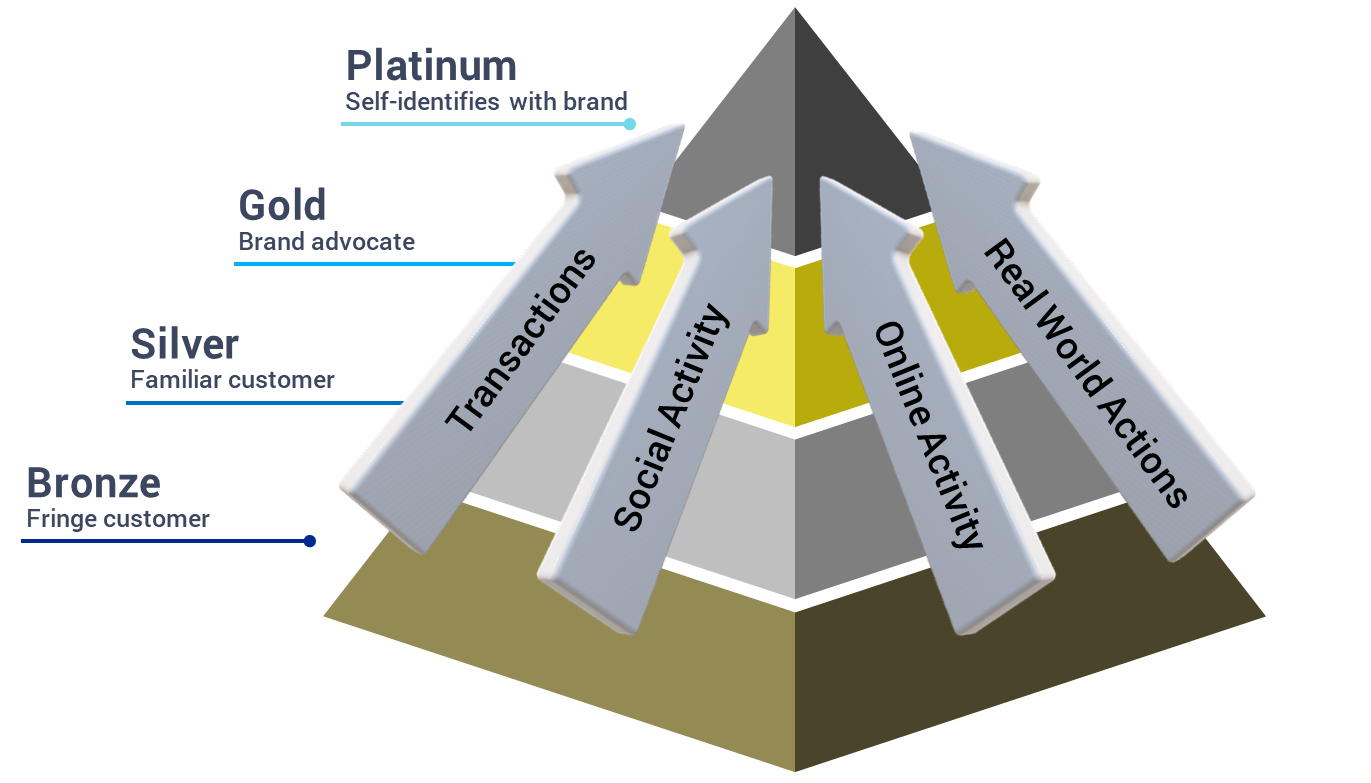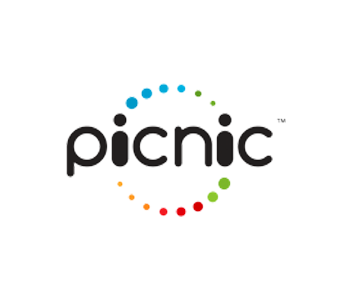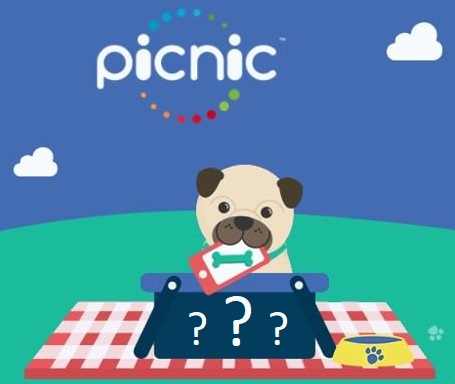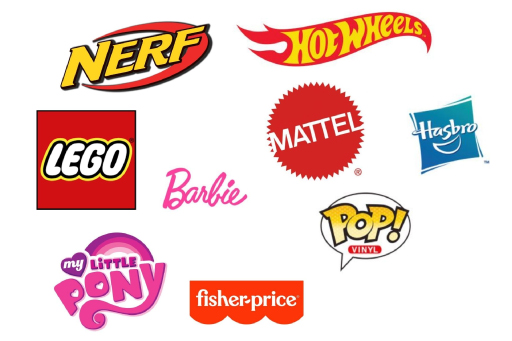
by Steve Bocska
The Customer Pyramid model, popularized by Zeithaml, Rust, and Lemon, has long been a cornerstone concept in the world of customer relationship management. More of a two-dimensional triangle than a true pyramid, the model provides a simple framework for segmenting customers based on profitability and loyalty. At the top of the pyramid are Platinum customers. In this coveted tier, customers generate high profitability combined with strong loyalty, making them the most valuable assets for any business. Below them are the Gold customers who are high on profitability but may not be as loyal. Iron customers are found one level below Gold, offering moderate profitability and loyalty, while Lead customers form the base, contributing the least in terms of both metrics. The actionable strategies offered by this model help businesses to not just identify but also to manage and elevate different customer segments.
At PUG Interactive, we expanded on the concept of the customer pyramid with an evolved approach designed to better address the depth and breadth of complex brand-customer relationships today. Instead of Zeithaml’s approach of prioritizing economic transactions as the primary metric of customer value, PUG’s model adopts a broader perspective, recognizing that the health of brand-customer relationships is contingent upon a multitude of factors. This includes not only transactions but also online activity, real-world actions, social activity, brand sentiment, and more. This multifaceted approach underscores the importance of engaging customers across various platforms and touchpoints, reflecting a more nuanced understanding of what it means to build and maintain loyalty in the digital age.
The PUG model’s emphasis on a broad range of engagement metrics aligns with contemporary research in the field of marketing, which highlights the shifting paradigms of customer engagement. The modern customer engagement model extends beyond the transactional, incorporating customer’s engagement through digital, social, and physical interactions. In PUG’s pyramid, true brand advocacy emerges from a composite of interactions that collectively contribute to a customer’s overall experience with a brand. Moreover, PUG’s Pyramid resonates with the concept of “customer brand engagement”, defined as the level of a customer’s cognitive, emotional, and behavioral investment in specific brand interactions. This concept is exemplified in the PUG model through its segmentation of customers from bronze to platinum levels, moving from fringe to deeply engaged customers who identify with the brand. This segmentation illustrates that engagement is not a monolithic construct but rather a spectrum of involvement and affinity with a brand.
PUG Interactive’s Customer Pyramid model introduces a novel approach to customer segmentation that diverges significantly from traditional models based on spending or transactional value. This innovative segmentation method categorizes customers into four distinct tiers: Bronze, Silver, Gold, and Platinum. These tiers are defined not by the monetary value a customer brings but by their level of engagement and relationship with the brand, ranging from fringe customers (Bronze) to those who self-identify with the brand (Platinum). The segmentation approach in PUG’s model aligns with a digital era that has transformed customers from passive recipients of marketing efforts into active participants in brand storytelling and value creation. This shift necessitates a segmentation strategy that accounts for various forms of customer engagement beyond mere transactions. PUG’s model effectively responds to this need by considering a range of interactions, from online activity and social media engagement to real-world actions, thus offering a more holistic view of the customer-brand relationship.
This segmentation approach also aligns with the concept of engagement-based customer segmentation which recognizes customers’ multidimensional interactions with a brand, suggesting that engagement-based segmentation can lead to more effective and personalized marketing strategies. By categorizing customers into tiers based on their engagement level, PUG’s model facilitates the development of tailored marketing efforts designed to meet the specific needs and preferences of different customer segments.
Maximizing the size of the Gold and Platinum tiers within PUG Interactive’s Customer Pyramid model is pivotal for cultivating lasting customer loyalty. Customers situated in the lower tiers, such as Bronze and Silver, often exhibit a level of indifference towards brands. Their engagement is more casual and transactional, making them more prone to defection or swaying by competitors’ offerings. These customers, while valuable, have not yet developed a deep or emotional connection with the brand, which is essential for true loyalty.
In contrast, customers in the Gold and Platinum tiers have crossed a significant threshold. They are not just loyal; they are advocates and deeply connected to the brand’s values and community. Their loyalty is less about transactions and more about the relationship and identity they share with the brand. They are less susceptible to competitive offers and are more likely to repeat purchase, engage in positive word-of-mouth, and contribute to the brand community. This transition from transactional loyalty to emotional and community-based loyalty is what makes them invaluable.
Therefore, the larger the Gold and Platinum segments of the pyramid, the more robust the brand’s customer retention and overall loyalty. These customers form the core of the brand’s community, driving both direct and indirect value. Directly, they contribute to sales through repeated purchases and premium engagements. Indirectly, they enhance the brand’s reputation, attract new customers through advocacy, and provide valuable feedback that can guide the brand’s evolution.
Strategies to grow these top-tier segments focus on personalization, recognition, and providing value that transcends the product or service itself. It involves creating exclusive experiences, offering opportunities for deeper involvement with the brand, and recognizing and rewarding their contributions. By focusing on the emotional and community aspects of the brand relationship, companies can transform indifferent customers into loyal advocates, thereby ensuring a stable and engaged customer base that is resilient in the face of competition and market changes.
Keep Reading...

World of PUG Blog April 3, 2024
PUG Announces Launch of AI-Driven Intelligent Rewards System (IRS)
by Steve BocskaPress ReleaseFOR IMMEDIATE RELEASEPUG Interactive Launches Intelligent Rewards

World of PUG Blog April 3, 2024
PUG Interactive Unveils InsightPulse: A Revolutionary Predictive AI Analytics Dashboard
by Steve BocskaPress ReleaseFOR IMMEDIATE RELEASEPUG Interactive Unveils InsightPulse: A

World of PUG Blog March 21, 2024
Building Bonds: The Future of Family-Focused Loyalty Programs
by Steve BocskaThe children's toy industry, home to iconic brands

